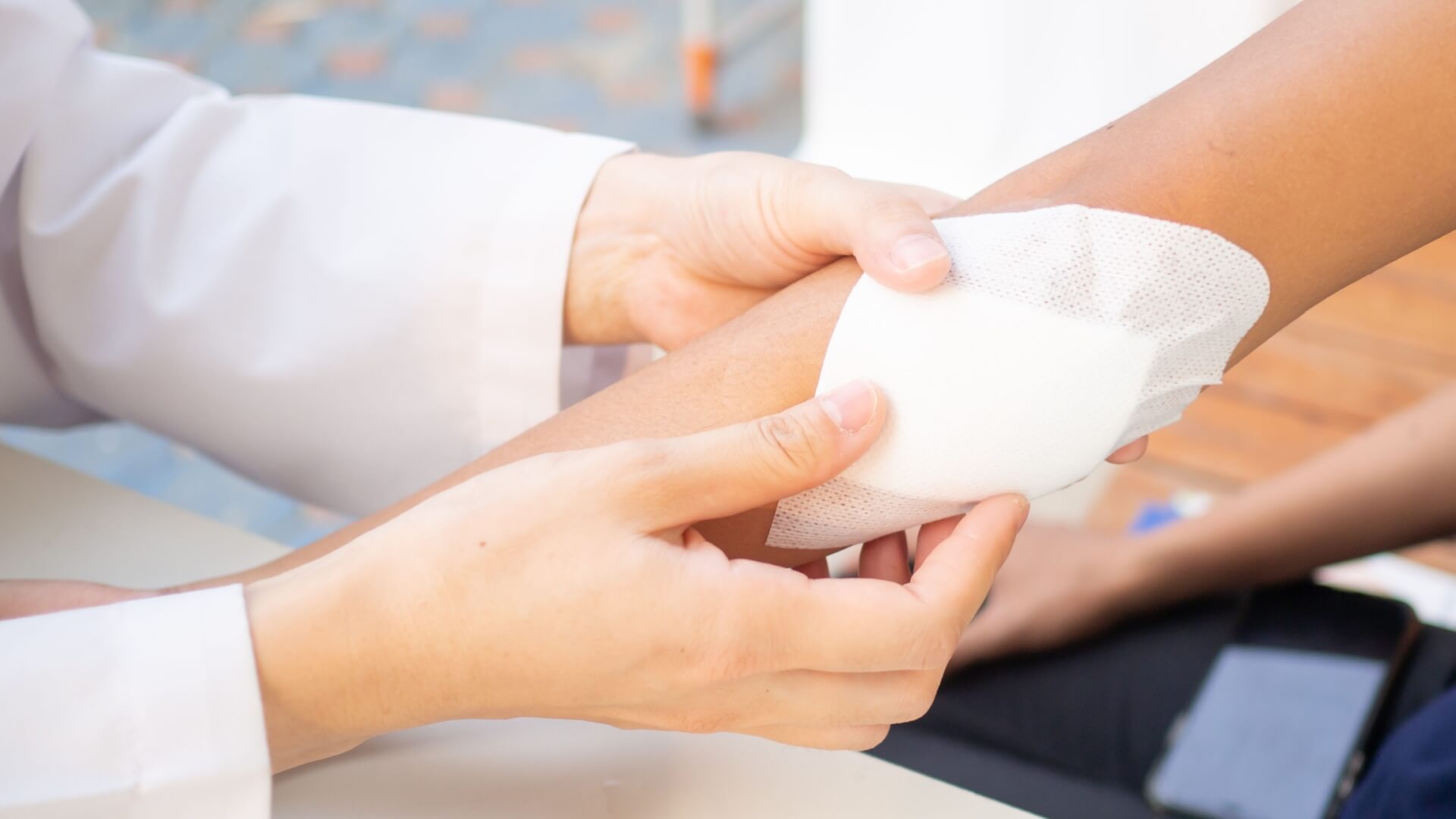July 5, 2024
Surface area wounds are becoming increasingly complex to treat, especially for military personnel who are often exposed to high-risk environments.
It is crucial to understand the nuances of these wounds and explore advanced wound-healing technologies that can significantly improve the wound-healing process and patient outcomes.
Gladiator Therapeutics can guide you through the types of surface wounds, current challenges in their treatment, and the promising breakthroughs in wound healing technology, particularly with Gladiator Therapeutics’ patented far infrared technology.
Understanding Surface Area Wounds
Surface area wounds are injuries that affect a large portion of the skin’s surface. They include:
- Abrasions
- Lacerations
- Burns
- Ulcers
These wounds can range from mild to severe and often require specialized care to heal properly. Proper wound management is essential to promote healing, prevent complications, and restore normal function to the affected skin tissue.
The Impact on Different Patient Populations
While surface area wounds can affect anyone, they are particularly prevalent among military personnel who face various hazards in their duties.
The physical demands of military training and combat, in particular, increase the likelihood of sustaining such injuries. This makes proper wound care a top priority. It should be tailored to the individual’s specific needs so they can have accelerated wound healing and less downtime.
Current Challenges in Surface Area Wound Healing
The treatment of surface wounds presents numerous challenges, with infection being a primary concern. Open wounds are highly susceptible to bacteria, leading to complications that can hinder the wound-healing process.
Additionally, chronic wounds may arise. These often require specialized treatment approaches such as negative pressure wound therapy, which can take several weeks or months.
Delayed Wound Healing
Surface area wound healing also has the potential for delayed recovery. Surface wounds often take longer to heal due to their size, the location of the injury, and/or the extent of the skin damage.
Traditional treatments may not always provide the necessary support for granulation tissue formation and wound closure. This leads to prolonged discomfort and added risks.
As such, there is a need for advanced interventions that promote faster, more efficient healing to reduce the risk of chronic wound healing complications.
Patient Discomfort
The pain and discomfort associated with surface area wounds can be debilitating. Managing this pain while undergoing treatment is a delicate balance that healthcare professionals try to help you achieve.
This often requires a combination of medication, wound care techniques, and patient-specific strategies.
Taking care of discomfort relieves pain and helps prevent any issues that could come from ignoring it. This way, patients are more likely to stay on track with their treatment, leading to better healing and a more positive overall experience.
Breakthrough in Wound Healing Technology
Enter Gladiator Therapeutics with our groundbreaking far infrared technology. This innovative approach to wound healing has shown promise in accelerating the recovery process.
Unlike traditional methods, FIR technology works by facilitating the absorption of energy and the elimination of waste, allowing cells to function more normally and achieve homeostasis.
It also enhances blood flow and cellular function, accelerating the healing process in acute wounds and reducing the need for prolonged traditional interventions like hyperbaric oxygen therapy.
Benefits and Potential of Wound Healing Technology
One of the most notable benefits of Gladiator Therapeutics’ FIR technology is its ability to accelerate the healing process.
By supporting stem cells in the affected area, FIR technology promotes natural recovery processes, thereby enabling faster, more effective healing of surface wounds and other severe injuries.
This is especially crucial for military personnel who need to return to duty as quickly as possible.
Reduced Infection Risks from Surface Area Wound Healing
FIR technology’s ability to enhance blood flow and promote waste elimination significantly reduces the risk of infection in surface area wounds.
By creating a more stable healing environment, it helps prevent the entry and growth of harmful bacteria.
This is particularly important in chronic diabetic foot ulcers and other wounds prone to complications, as reducing infection risk directly impacts the speed and success of the wound healing process.
Enhanced Patient Comfort
Gladiator Therapeutics’ FIR technology also focuses on enhancing patient comfort during treatment. By reducing pain and promoting more efficient healing, patients can potentially return to normal activities quicker.
This approach to surface area wound healing aims to alleviate the discomfort typically associated with surface wounds, offering a more comfortable and speedy recovery.
Contact Gladiator Therapeutics to Combat Surface Area Wounds
Surface area wounds present a unique set of challenges, particularly for military personnel. Traditional treatment methods often fall short of addressing the complexities of these injuries.
However, advancements in wound healing technology offer promising solutions that can enhance wound healing, reduce infection risks, and increase patient comfort.
If you’re interested in learning more about how Gladiator Therapeutics can help improve surface area wound treatment, contact us today.

